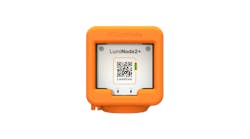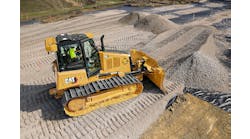Wayne Harris, president and CEO of Point of Rental Software, talks with RER about contactless technology; its telematics-enhanced customer dashboard; its Inspection App; eSign + pay; customizable dashboards; integrations with Trackunit, EquipmentWatch and Rouse; and more.
RER: What are some of the products and capabilities you have added in the past year approximately?
Harris: As far as products go, our Point of Rental One app is connecting companies’ teams via its internal messaging system while integrating all of our mobile apps. We enhanced eSign to make it independent of our software and added payment capabilities so that anyone in the industry can do contactless contracts during the coronavirus crisis. Our Trackunit integration allows Expert and Elite users to better serve their customers with a telematics-enhanced customer dashboard.
This year, we’ve implemented more than 150 user ideas into our software products via uInnovate, our dashboard that allows customers to make suggestions and vote on other ideas, quickly and easily. If you want to learn more about our upgrades and many others, we have approximately 100 pages of detailed notes you can find for this year’s releases within the system.
What are customers asking you for now, or what are some of the trends in what they’re asking for?
Obviously, over the past few months the industry, and the world, has been asking for contactless technology. They want to connect safely with their customers and their teams. eSign + Pay has helped with a lot of that, but it’s mostly been about small improvements to the software over time that become things a business doesn’t want to live without. We’re implementing hundreds of user suggestions each year, most of which are focusing on making the software more mobile, more accessible, and really keeping everyone on the same page, regardless of where you’re working.
Obviously different customers adopt new technologies at different paces, some faster than others, and companies have different priorities. But, in general, what are some the capabilities of your software that are under-utilized that you wish more companies would pick up on?
There are a few things that everyone can benefit from. First of all, installing updates when they become available. It ensures you have the latest and greatest and that you’re not calling in or requesting features that are already in the system. Implementing online signatures and payments is big, especially now, but equally important is giving people the ability to reserve items online. Basically, you’re able to give customers full visibility into what you have available without them having to come into your store or showroom, which may or may not be open.
Event rental businesses that use Fulfillment find it a lot easier to see accurate counts at every step, as well as eliminating go-backs and equipment lost at customer sites. For equipment rental, our maintenance program and Inspection App make it easy to set up a PM schedule that notifies you when maintenance is due and complete the process in a completely paperless way.
A lot of things have changed in the world because of the pandemic. What has changed in the rental industry, and how has your approach to software changed? Greater emphasis in e-commerce capabilities? Other changes?
Rental has always been a person-to-person industry with many contact points between staff and customers. The pandemic and the distancing between us creates challenges: How can we allow people to accomplish everything they normally would while limiting that contact?
Fortunately, we’ve developed many tools over the past several years to help rental businesses run remotely and paperlessly - we have mobile apps; we support online rentals, we allow for electronic signatures and payments.
But we also realized that not everyone has our software and would need at least basic tools, like the ability to get contracts signed and collect payments online, during this time. That’s why we worked to adapt eSign + Pay to be independent of our software and made it available for free for three months to anyone who wanted it.
In terms of the pandemic, presumably visits to your software users have decreased? Have you improved or enhanced your online training capabilities?
We’ve always had online training as an option, and it continues to be an important part of our training process. In addition, we created 80 webinars over the past few months for those with more general training or re-training needs. We’re also nearing the release of our customer portal, which will allow users to log questions or issues through the portal directly from the application and manage the status updates as they are resolved. They’ll get real-time notifications through the process as we answer questions and resolve their issues.
How has your software improved in making service personnel more efficient?
Everyone’s more efficient when they’re well-informed. We’re continuing to make it easier for service personnel to see what’s happening in the company as a whole - where items are, what’s being worked on, what needs work next, etc. Customizable dashboards allow personnel to see everything on one screen. It’s easier to log labor information directly from a mobile device into a contract – you can clock in/out and convert it to billable labor. eSign + Pay allows counter teams to get signatures and have equipment ready to go before a customer even arrives at the store for pickup.
How has your CRM programs improved? How does it make your sales or rental sales personnel more efficient or productive?
We’ve spent a lot of time ensuring our CRM is as simple as possible to read and understand, and that sales (and rental sales) people are able to see all the information they need on a single dashboard. They’re able to see what each of their customers have on rent, write up quotes and send them for signatures. All in all, it allows them to maximize their efficiency without necessarily having to be in the office.
Here are some areas I hear people talking about. Do you have anything new to share on any of these topics?:
Predictive maintenance:
Our Trackunit integration is being used in the field now; customers are able to access a customer portal that shows telematics information in addition to things like what items are on rent and when they’re scheduled back.
Maximizing e-learning and other online training programs:
Our customer portal is nearing its completion; it’ll have quick help guides, answers to FAQs and allow self-service options to create and manage support tickets. We’re also building out our internal learning management system to allow for customer access and in-depth training guides available in the future.
Improving delivery/dispatching capabilities:
Our Elite users now have access to commercial truck routing options, which take load and vehicle type limitations into account and route the driver onto roadways that are legal for a commercial vehicle. That helps drivers avoid costly penalties for violating motor vehicle laws.
Helping rental companies to analyze utilization and improve rental rates:
We still have integrations with EquipmentWatch and Rouse; as far as internal comparisons and figuring out profitability/utilization, that’s a core function of the software that really hasn’t needed to change. We’re working on implementing price modeling for used rental assets that will help users create a price model based on manufacturer, age, meter reading, times rented, depreciation, etc. that should be in the software by the end of the year.
Tracking location of each asset:
This has existed in Expert and Elite for a while, but now Essentials also allows users to set up different stages in the ready-to-rent process that they can assign equipment to.






